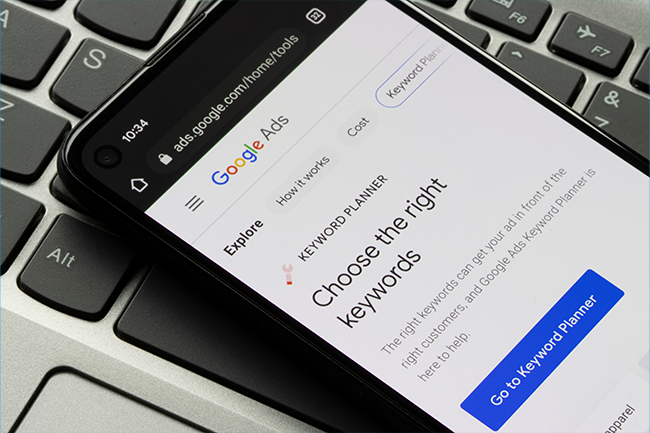
Taking the Stress Out of Social Media Management
Social media is an important part of a complete digital marketing strategy, but it can be one of the more difficult marketing channels to manage on an ongoing basis. There are countless resources available to help you optimize and maximize your social media presence, but if you’re having trouble maintaining a baseline social strategy, there won’t be much to optimize.
Simply put, unless you have a dedicated social media manager and resources, it may be tough to get a social media project off the ground. Time after time when talking with business owners and marketing managers, we’ve heard a common refrain: It’s simply not manageable to run an effective social media program with limited resources.
With that realization, many businesses turn to their digital marketing agency to develop a social media partnership. A great agency should know how to tie together social campaigns with overall marketing goals, and seamlessly integrate social media communications as part of new marketing campaigns. Still want to manage your social media in-house? We’ve put together 7 tips to help make social media management manageable.
Stick to the Most Impactful Platforms
There are countless social media platforms, with new ones seeming to crop up every day. There are huge ones that everyone knows, like Facebook, Instagram, and Twitter, but your younger customers may be spending their time on massively popular platforms like TikTok and Snapchat. And, of course, there are countless niche networks that you may never have heard of, but maintain a surprising number of loyal users.
What platforms do you need to be on? In an ideal world, you should be where your customers are, but that’s not realistic for most businesses. Your customers can be on countless different platforms, but unless you have unlimited resources (we’re guessing not!), then you’re going to have to be more selective. Conduct a social media audit to identify where your customers are spending the most time and talking about the products and services you provide, and stick with only the most highly utilized platforms so you don’t spread yourself too thin.
This is effective even if it means you’re opting for only one social media platform, like Instagram. The goal is to develop a manageable routine, and once you’ve done that, it’s easier to expand to additional platforms without getting overwhelmed.
Establish a Feasible Posting Schedule
What’s the optimal number of posts per week for your business? Many studies recommend up to five posts per week, but your plan should be based on what is realistic with your available resources. It’s easy to be optimistic, over-commit with a very active posting schedule, and then burn out and become dormant until you have more content to share. That’s not ideal. What’s important is to be consistent, rather than using a “feast or famine” strategy.
When evaluating a realistic posting schedule, be sure to consider the hurdles to gathering and posting content. Unless you create all of your own content for social, you need to consider how your content partners will impact your posting schedule. If your designer is buried in other work or your posts go through a lengthy approval process, you may only be able to realistically post 2-3 times a week.
Develop Message Categories
Think about what information your customers may want to see in their social feeds. It’ll vary from business to business, but customers want more than just a constant flow of product or service pitches from a business they follow. This is an opportunity to highlight your company’s expertise and success, both business-wide and individual achievements.
Employee spotlights usually get good engagement and can increase morale. As long as you’re careful about sending the right message, holiday posts can be a good time to deliver a warm or creative message. Testimonials and positive reviews can provide important social proof. Periodic contests or giveaways always draw attention, not just from your page’s fans, but from others as well when you encourage your followers to tag and share.
Ultimately, limiting most of your posts to a few effective message categories will help customers tune in instead of tuning out, while giving you a stable list of post types to build from.
Build a Content Calendar
Every social media guide will tell you content calendars are critical to social media success, and this one is no different. With or without limited resources, a content calendar is a must. The time you invest up front will pay off down the line.
A content calendar will help with planning, asset acquisition, campaign management and more. Content calendars force you to think in advance about what types of posts you want to make, and when. If you have a plan for when you want to post a specific message, you can better coordinate the asset acquisition if you need images or information from other people. By planning ahead with message categories in mind, you can make sure you vary your messaging from post to post to keep it interesting, rather than grouping too many of the same types of posts in a row unintentionally. And if your business has new product launches, store openings, promotions and other timely events, a calendar will prevent a situation where multiple messages end up getting posted on the same day, which may decrease views on the most important message you want them to see.
Reduce Design Time by Using Templates
On platforms like Facebook, posts with visuals get more engagement, so always include an image or video with your posts. Images are easy to post, but unless you’re a graphic designer, it becomes more complicated when you add a logo, message, or other design elements to your image. While there are plenty of easy-to-use design tools available, this can often result in an unprofessional and inconsistent looking grid of images, which detract from your brand.
We recommend creating a few on-brand design templates for your social media posts. Having common colors, fonts and design elements pre-determined for you will tie together your posts with consistency and prevent you from sinking time into making these decisions.
Create Your Posts in Advance and Schedule Them
If you already know what and you’re going to be posting, you can save time by creating your assets and using a tool like Publer, Hootsuite, or Sprout Social to schedule your posts in advance. When you wear many hats as a marketer, it’s helpful to get into a social media mindset and create a large batch of posts in one day, rather than needing to refocus your attention from the major priority of the day to social media several times a week.
Be careful to not schedule your posts and forget about them, though. There are plenty of reasons why you may need to cancel or reschedule posts. Content may become outdated, like if a product goes out of stock or an employee that was spotlighted parts ways with the company. Unexpected external factors like a natural disaster or national tragedy may require you to suspend your posting so you don’t appear insensitive or tone-deaf.
Use Templates for Comment Responses
Don’t make the mistake of posting one-way messages and calling it a day. You also need to listen to and respond to your customers and potential customers, as well. Respond to every message on your pages, including negative comments, because customers want to see how you respond to other customers -- especially upset customers. They want to see that feedback is taken seriously. While it’s best to respond to all legitimate comments, you may need to hide someone’s comments if they are clearly trolling, offensive or aiming to cause trouble.
Here’s another important reason to respond: Reacting to and also commenting on each comment on the post shows the social media platforms that there has been engagement on your post. The more engagement, the more valuable social media platforms view your post and will serve it to more of your followers.
It’s wise to choose your words carefully, but it can be time consuming to think of the perfect thing to say with each comment. Don’t use a canned response for every message, but when you find language and comment themes that work well for your brand, make note of them so you can pull from those themes with future comments. The consistency in tone of voice and messaging will save you time and will sound more professional.
Over time, you may find that you have 3-5 ways that work well to respond to someone when they have a price, service, or selection praise, complaint or question. You can save minutes per reply but that adds up so having responses on hand, especially to the most frequently asked questions, makes social media marketing far more manageable.
Summary
With dedication, a strong strategy, planning, and the right tools, social media marketing can be manageable, and an effective piece of your overall digital marketing mix. Hopefully these tips can streamline your process and get you on the path to success. But if it still feels like too much to tackle, CTRL+ALT Digital is here to help with social media, as well as any of your website, PPC, SEO, analytics, technology needs, and more.



